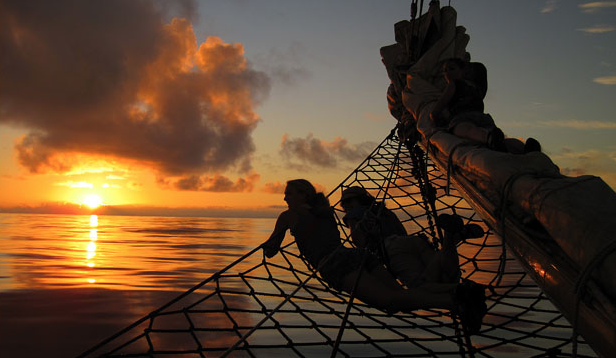I've left for Antarctica! It’s hard to believe after waiting for months and months, I'm on an airplane heading south. After the paperwork, medical checkups, dental checkups, more paperwork, all it comes down to is packing. That’s not hard, right?
So, what did I pack? Well, when I told people I was going to Antarctica, some of the first things they asked were how cold would it be and how many pairs of socks I needed to bring. Antarctica is cold, true. Although you have to remember that it is summer right now and temperatures don’t get as cold as they do in the winter. I’m also working near Palmer Station, which is along the Western Antarctic Peninsula (WAP). The average annual temperature there is -3ºC (or ~27ºF), more than 2º warmer than it was 50 years ago. Let's not be foolish, I still brought lots of warm layers. I also receive a duffle bag of "Cold Weather Gear" (CWG) when I get to Chile to protect me from the elements so I’m not too worried about being cold. I thought I would practice to see how it feels in one of the freezers at the Aquarium before I left.
 |
| Preparing for the cold in the Aquarium’s food freezer |
What other things am I packing? Well, lots of camera gear for one thing. I’m hoping to get some amazing footage of the environment, share with you the research I'll be doing, photographs of the ship and introduce you to the many people that work hard to make it all happen. So, that means two cameras, one camcorder, one GoPro camera, batteries, memory cards, backup drives, chargers, cords and lots of other stuff. I’m my own mobile movie studio!
 |
| Gear, gear and more gear |
In addition to all the stuff, I was encouraged to bring a few items that remind me of home. For me this includes my trusty coffee mug, a daily journal hand painted by a friend of mine, some chocolates (yum!) and a t-shirt given to me by a class of students in Pennsylvania who will be following my journey. Hi, Polar Ambassadors! It doesn't sound like much but these little reminders of home can help me feel comfortable!
 |
| My reminders of home |
Time is now ticking and I still can’t believe that it’s here. The butterflies in my stomach are kicking into high gear, both from the excitement and the nerves. Hopefully they will settle down so I can rest a bit. Can't wait to talk to you from Punta Arenas, Chile. Stay tuned.
Jo
All of Jo's entries will be cross posted on the Palmer Long Term Ecological Research Station site here. Learn more about the Palmer Long Term Ecological Research Station.






































